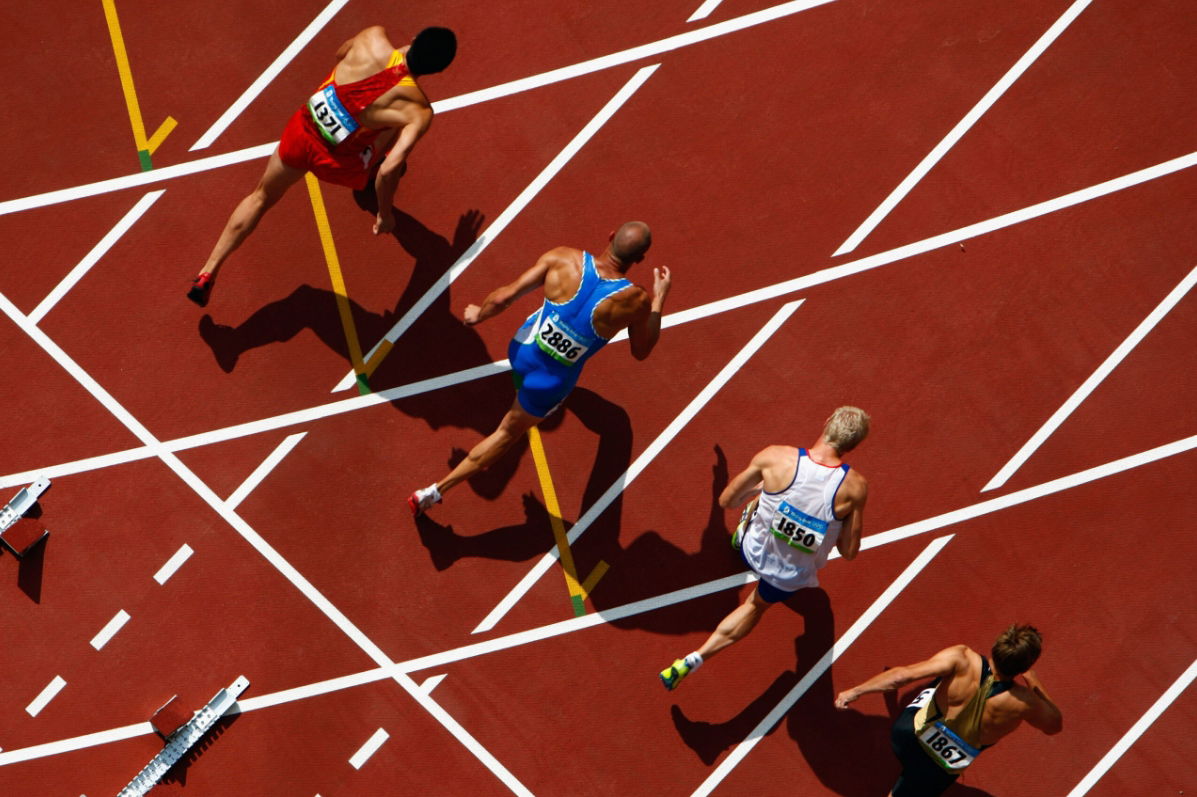

While the world was busy with the Olympics opening ceremony, the lawyers representing the NCAA and athletes planted the seeds of change. The lawyers filed for a settlement that may transform how Name, Image, and Likeness (NIL) deals affect collegiate sports. The settlement would introduce revenue sharing in sports such as football, basketball, track and field, etc.
Watch What’s Trending Now!
This may sound like another positive change in the ever-changing NCAA landscape. However, the issue arises with where the money may end up. The historic settlement, if approved, would tilt the scales in favor of certain sports. Men’s and women’s basketball and football would reap the benefits. Thus, the USATF has raised the alarm bells.
“The threat of potential cutbacks across the NCAA looms darkly on sports like track and field, which boasts the world’s most robust high school and collegiate programs,” said USATF CEO Max Siegel as per Sports Illustrated. The USATF president Vin Lananna has also chimed in. “Anyone who thinks that those changes will not be dramatic is not paying attention,” says Lananna in the original letter obtained by Runner’s World.
ADVERTISEMENT
The issue facing collegiate track and field is three-pronged. Firstly, the athletes who competed between June 15, 2016, and September 15, 2024, and didn’t receive NIL money are all set to get $2.78 billion in back payments from the NCAA. Although a positive development, 95 percent of the back will go to football and basketball athletes. However, the other two points have worried coaches even more.

ADVERTISEMENT
Like many Division 1 sports, the athletic departments of several universities are not profitable. However, revenue sharing when you’re struggling to generate profit makes things even more difficult for everyone involved, including coaching staff and athletes. And finally, the third problem is the roster changes. “Sports would no longer be bound by a specific number of scholarships.” Runner’s World reported on October 31.
ADVERTISEMENT
The roster change woes do not end here, as NCAA football is set to get 105 roster spots, compared to the current 85 spots. The NCAA’s Title IX rules also dictate that women’s football will get an increased roster limit. Yet track and field associations and coaches worry that the Olympic sport will be among those paying a price.
How can NCAA track and field avoid disaster?
Lananna said USATF’s “historic, unprecedented success on the world stage” is thanks to the robust NCAA program. However, the budget squeeze that the settlement will initiate may compromise the integrity of several NCAA programs. The NCAA won’t inject a financial boost to offset the increased roster limits in football. Hence coaches fear the universities may cut down on track and field rosters.
ADVERTISEMENT
In fact, some fear that smaller rosters currently taking shape may not exist after the revisions come into play next year. However, there’s one rule that will urge Division 1 institutes to continue supporting the Olympic sport. To remain a Division 1 member, these institutes must include a combined 14 sports (men and women). Those in the NCAA Football Bowl Subdivision (FBS) must include 16 sports.
Hence, there’s a good chance that these universities won’t do away with track and field. However, USATF fears that this safety net isn’t enough. On October 26 Runners World reported that the SEC may be already considering limiting its men’s cross-country roster to 10 and track and field roster to 35. Now, figures like Lananna and Arizona State University professor Victoria Jackson have issued a call for action.
Top Stories
Pro Suffers Disqualification at PGA Tour Q-School After Several Players Withdrew Abruptly

NFL Announces Hefty Punishment for Shedeur Sanders Incident

2025 Vic PGA Championship: Prize Money, Winner’s Payout & More Explored

Support Pours In From Phil Mickelson as ASU Football Coach Chokes Back Tears in Public

Jason Day Opens Up About Going Through Traumatic Childhood Just to Play Golf: ‘It Was Tough’

Forced to Leave FOX, Cowboys Legend Troy Aikman Says ESPN Is Like ‘U.S. Government’ & Clearly Distinguishes the Two Networks

ADVERTISEMENT

“It’s time for sports beyond football and basketball to take action. Coaches associations, national governing bodies, national governing body foundations, and other sports stakeholders need to start advocating for their sports and athletes,” Jackson urged in light of the impending changes. Judges handling the settlement issued preliminary approval to the sweeping changes in early October. So, the NCAA track and field has a few months to stake its claim before the final hearing in April 2025. What are your views on the NIL settlement and its potential effects? Write your views in the comments.
ADVERTISEMENT
ADVERTISEMENT
ADVERTISEMENT
ADVERTISEMENT

